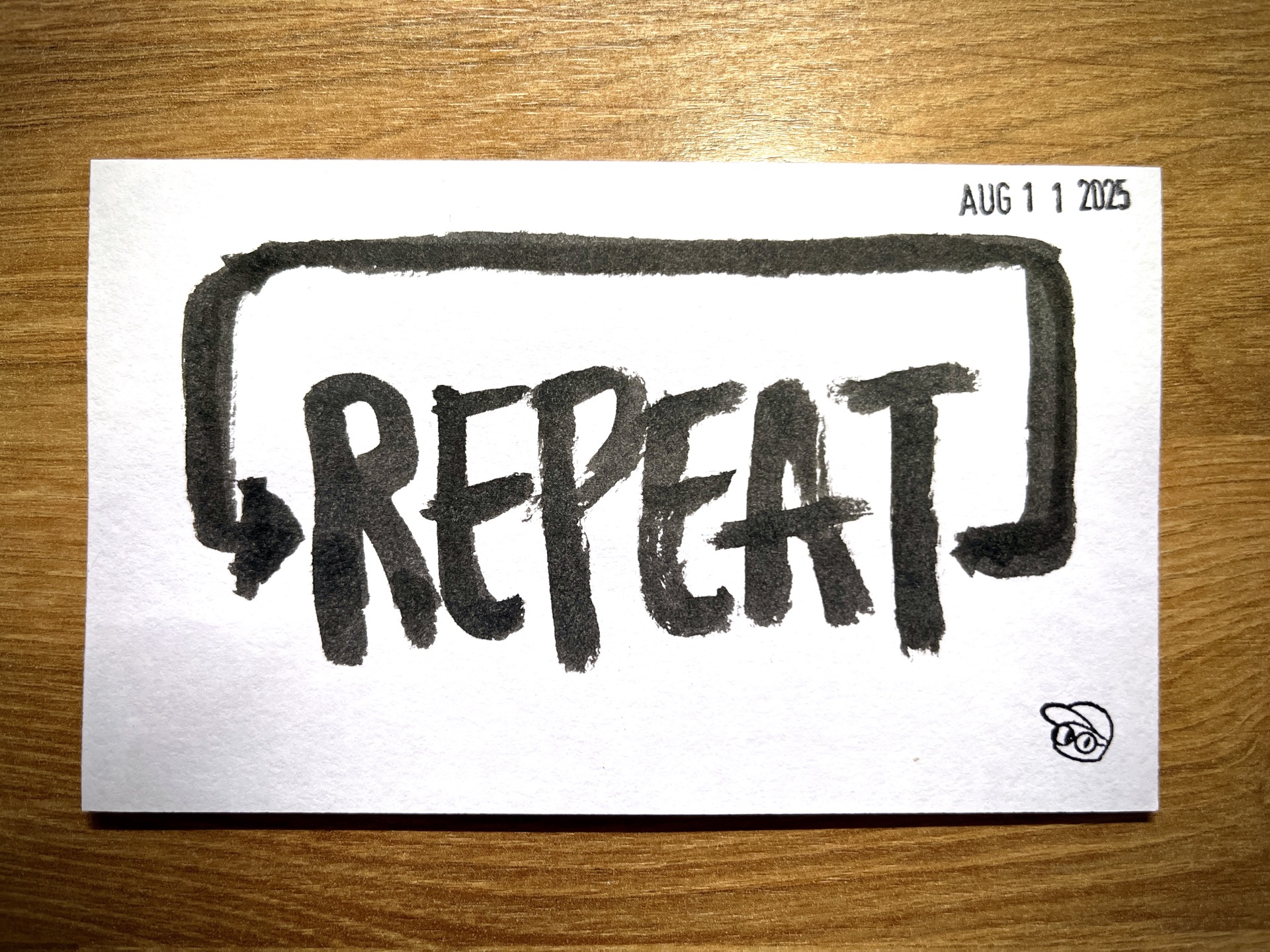These days, as I work with people—as I lead teams and projects—I repeat myself. A lot.
Not by accident. Not because I’ve run out of ideas. But because I’ve learned repetition is both normal and necessary.
Saying it once is never enough. The world is loud. The work is messy. And on a good day, most people are catching maybe 30% of what you’re saying.
That’s why it’s not just what you repeat that matters—it’s how you repeat it.
Not in the “reading bullet points off a slide” way. But in the crafted, storytelling way—the kind that lands, lingers, and makes someone feel something.
First
When I share something, I try to make it feel like it’s the first time I’ve ever said it—even if it’s the third time that week.
Maybe half the group heard it before in another meeting. Maybe I told a similar story in yesterday’s 1:1. Doesn’t matter. I try to bring the same freshness, the same presence, the same moment.
That takes ignoring the little voice in my head that’s screaming in all caps, “YOU SAID THIS ALREADY!”
Sometimes I’ll even check myself: Did I say this to you already? Occasionally, I’ll cave to that voice and say, “I told so-and-so this already, but…”
There’s nothing wrong with that. But here’s the risk: the second you frame it as a rerun, you risk making the listener feel like an afterthought. That they’re late to the conversation. Like they’re getting the photocopy instead of the original.
And in that moment, you risk diluting both the connection—and the impact—you could have made.
Because the work isn’t just in repeating the words—it’s in carrying the idea with enough care that every recipient feels like they’re getting the main course, not scraps.
Second
I don’t just repeat across different conversations. I repeat inside the same conversation.
At the end of a call, I’ll run it back. Summarizing the key points, the action items, the “if you remember one thing from this 30 minutes, it’s this” takeaway. The TL;DR. (Sometimes I’ll literally say, “TL;DR.”)
It’s not just for them. It’s for me. Repeating back the essentials is like a systems check before takeoff. It confirms I heard what I thought I heard. It gives them a clear chance to correct me before I burn time taking off in the wrong direction—like the callback in a kitchen, before someone answers with “Heard.”
It also pulls the conversation into shape. All those scattered threads and side tangents? Pulled into one clean line. All the noise? Distilled into something sharp and portable—something you can carry out of the room and still remember in the hallway, in your inbox, or at your desk two hours later.
Because people don’t leave a meeting with everything you discussed. They leave with one or two things—maybe three if they’ve had coffee.
If you don’t shape what those things are, someone else will. The trick is making sure it’s the right thing.
Third
Several years ago, I learned a communication technique from Alan Alda called the 3 Rules of 3:
Say 3 things.
3 times.
3 ways.
It’s a cousin to another classic:
Tell them what you’re going to tell them.
Tell them.
Tell them what you told them.
I shorthand it to “3x3” in my head.
It’s deceptively simple—but deadly effective. The first pass plants the seed. The second waters it. The third makes sure it takes root.
3x3 isn’t about padding the air with repetition for its own sake—it’s about reinforcing what matters until it’s impossible to forget. You’re not hammering the same nail just to hear the sound. You’re making sure the frame holds the picture you want people to see.
Whenever I’m staring at a mess of details—a dozen threads, competing priorities, and random tangents—I think of 3x3 like writing a song: verse, bridge, chorus. Each part does its own work, but the hook keeps coming back. It’s familiar. It’s memorable. And when it hits again, it’s not just a repeat—it’s the moment everyone leans in and says, “Oh yeah, this part.”
Again
Repeating yourself isn’t lazy. It’s leadership.
It’s the unglamorous, high-value work of carrying the message until it lands. You’re not just pushing information—you’re building shared memory, shared language, shared direction. That elusive “shared context” everyone claims they want.
Every time you repeat something with intention, you’re giving people another chance to catch it. Another chance to connect dots they missed the first time. Another chance to feel like they’re on the same page—not just in the same meeting.
Yes, you’ll get bored of your own words. But they’re not living inside your head. For them, this might be the first time it clicks. The first time it feels theirs. The first time they feel it matters.
So repeat yourself. And do it well. Not as an echo, but as an anchor. Not as filler, but as signal.
Because in the work that matters, saying it once is rarely enough. Usually, you have to say it three times—in three different ways—before it sticks.
